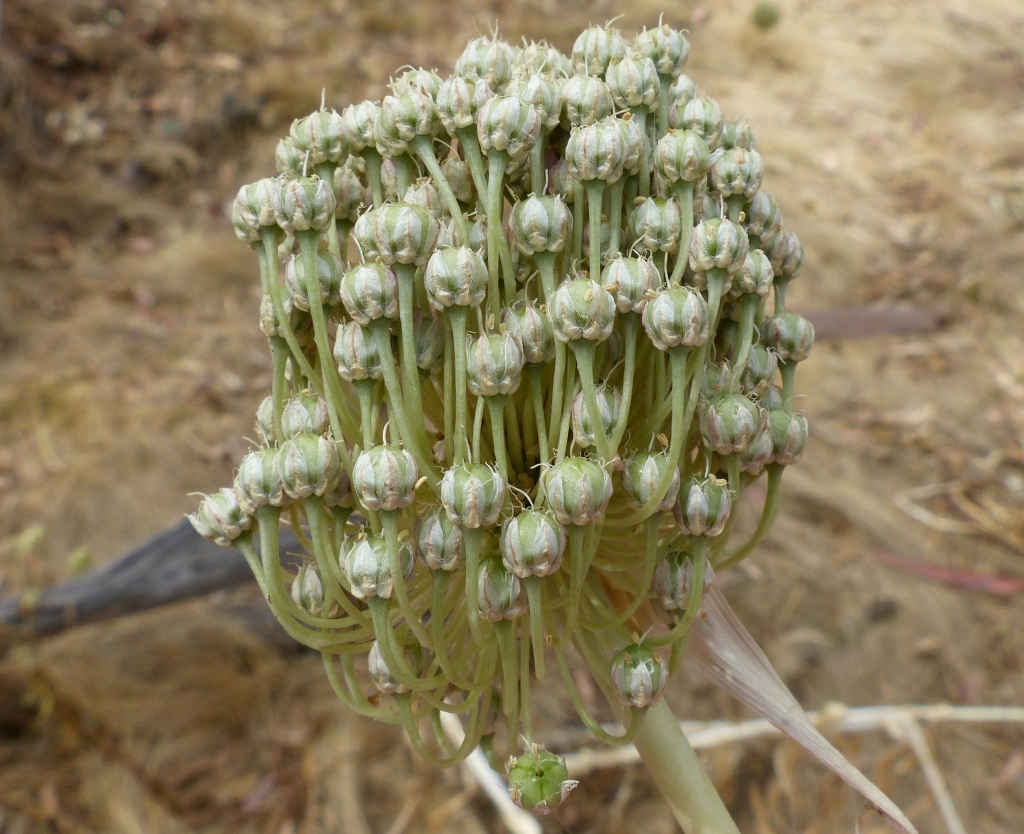Allium ampeloprasum
L. Great-head GarlicBulb broadly ovoid or subglobose, 2–6 cm diam., usually with numerous bulblets. Scape terete, erect, 50–200 cm long, 4–12 mm diam. Leaves 4–10, sheathing the lower half of the scape, channelled, 10–50 cm long, 5–40 mm wide. Umbel almost spherical, many-flowered, without bulbils; pedicels 1.5–5 cm long; spathe deciduous; perianth cup-shaped or campanulate, segments ovate, 4–5.5 mm long, usually pink, papillate on outer surface; stamens exceeding-perianth, the inner 3 deeply trilobed, the central lobe anther-bearing. Capsule c. 4 mm long. Flowers Dec.–Feb.
Brid, VVP, Gold, CVU, EGL, HSF. Also naturalised in WA, SA, NSW, Tas. Native to the Mediterranean region. Possibly not truly naturalized, but persisting in and near abandoned homesites (Hepburn region and Gippsland).
The culinary leek, A. porrum L., is a horticultural derivative of A. ampeloprasum. It differs in its more cylindric bulb, stouter stem, broader leaves, milder odour and taste, and its biennial life-cycle. It is frequently grown in domestic and commercial gardens and may persist shortly in and around these areas.
Conran, J.G. (1994). Liliaceae. In: Walsh, N.G.; Entwisle, T.J., Flora of Victoria Vol. 2, Ferns and Allied Plants, Conifers and Monocotyledons, pp. 637–686. Inkata Press, Melbourne.
 Spinning
Spinning




